Nogodan Guesthose (노고단 게스트하우스&호텔)
.0M 1001 2024-08-01
40 , Hagwan 1-gil, Gurye-gun, Jeollanam-do
+82-61-782-1507
Nogodan Guesthouse & Hotel is located in Gwansan-ri, Gurye-gun, Jeollanam-do, and is popular with weekend trippers and family vacationers visiting Jirisan National Park. Local hot spring water (high in traces of germanium) is provided in all rooms, so residents can relieve their fatigue in a hot spring bath after hiking; while from the hotel’s rooftop garden residents can enjoy fine views of Jirisan Mountain. A shuttle service to Nogodan, where the Jirisan trail starts, costs 20,000 won per person for the round trip. And at the 1st floor Buen Camino Restaurant & Pub l you can enjoy Jirisan black pork barbecue, Jirisan zucchini pancake, and seasonal vegetable side dishes.
Gurye Sansuyu Festival (구례산수유꽃축제)
934.3M 42473 2024-02-27
45 Sanggwan 1-gil, Gurye-gun, Jeollanam-do
+82-10-2079-4546
Gurye Sansuyu Festival is an annual spring flower festival. Major programs include exhibition of local products made from sansuyu (cornus fruit), while other programs include traditional music and dance performances, experience programs, and fireworks.
Gurye Sansuyu Village (구례 산수유마을)
3.1Km 23411 2020-04-25
6-12, Wianwolgye-gil, Gurye-gun, Jeollanam-do
+82-61-783-9114
Sandong-myeon in the Gurye-gun region is widely known as the home of sansuyu (cornus fruit) and is responsible for 70% of Korea’s sansuyu fruit production. The Sansuyu Village, located at the foot of the southwest side of Manbokdae Mountain (1,433 meters), is considered the region’s most representative village of sansuyu. The village has a beautiful natural landscape with the snow-covered Jirisan Mountain range to its back and a small valley to its right.
Visitors to the village can wind down at the hot spring complex nearby, which is famous for its germanium content and said to have numerous health benefits. The sansuyu flowers of Sansuyu Village typically are at full bloom between March 20 and March 31, drawing throngs of visitors.
* Please note that blossom dates are not exact and change slightly from year to year.
Jirisanhosu resort [Korea Quality] / 지리산호수리조트 [한국관광 품질인증]
4.9Km 228 2020-12-10
610, Gumanje-ro, Gurye-gun, Jeollanam-do
+82-61-783-0011
Jirisan Lake Resort stands on a hillside overlooking the Gumakje Lake, which was created by water from the Surakpokpo Fall of the Jirisan Mountain. The accommodation provides wonderful views of the big and beautiful lake and peaks of the Jirisan Mountain. Rooms arranged in a shape of steps on the sloping hill offers uninterrupted views. Located in front of the entrance to the resort is a pedestrian-only bridge over the lake, which is a great place for a walk. Across the lake is a ranch where cheese-making experience is conducted.
The resort offers glamping-style rooms with roofs in red and blue. The outdoor barbecue site, meanwhile, is the perfect spot to enjoy the true glamping. Guests can have a barbecue on the outdoor table in the terrace in front of each room. The wild flower farm located on the top of the resort is a place for guests to appreciate the flowers and for children to learn about nature.
Gurye Cheoneunsa Temple (천은사(구례))
5.0Km 14499 2021-10-02
209, Nogodan-ro, Gurye-gun, Jeollanam-do
+82-61-781-4800
Located north of Gurye on Jirisan Mountain, and built during the Unified Silla Period, Cheoneunsa Temple is one of the three great Buddhist temples of Jirisan Mountain. Cheoneunsa Temple is believed to have been built by Monk Deokun and Monk Seru from India in AD 828 during the 3rd year of King Heungdeok. Because it initially laid next to spring water as clean and cold as a morning dew, the temple was also called Gamrosa, meaning Sweet Dew Temple. The spring water was rumored to clean one’s body and soul, leading to crowd of Buddhist monks to visit the temple. During King Chungryeol’s reign, the temple was named the Best Temple in the south.
The temple was burned down during the Imjin War (1592-1598) and then later rebuilt and renamed Cheoneunsa. Legend has it that while the temple was being rebuilt, a large serpent often came out of the spring. When the serpent was finally captured and killed, the spring waters suddenly dried up. Hence the name Cheoneunsa, meaning Disappearance of Spring Water, was given.
Jirisan Cheese Land (지리산치즈랜드)
5.5Km 0 2023-03-17
1590-62 , Saneop-ro, Gurye-gun, Jeollanam-do
Chowon Ranch, which started milking with two cows in 1979, built Jirisan Cheese Land, an experience ranch, in 2012 to introduce the dairy industry and milk to more people based on its 30 years of experience. Jirisan Cheese Land distributes homemade cheese and yogurt, and at the experience center, you can experience making mozzarella cheese, feeding calves, and riding a grass sleigh. Over 130 dairy cows are grazing in the green meadow pasture, and the lake is adjacent to it, creating beautiful scenery. The specialty of Jirisan Cheese Land is nature. The dazzling greenery and fragrance of scenery, flowers, and grass are the special features.
Jirisan Manbokdae Peak (지리산 만복대)
6.1Km 24999 2021-02-05
Sandong-myeon, Gurye-gun, Jeollanam-do
+82-61-780-7700
Manbokdae Peak in the west soars at the boundary between Sandong-myeon, Gurye-gun and Namwon-si at 1,433.4 meters above sea level. ”Man” means “full of something” and “bok” means “fortune.” Like the name, Manbokdae is considered as a fortunate mountain with great views as it is surrounded by smooth hills. According to an old story, Manbokdae Peak was chosen as one of the 10 scenic areas, where people come to receive good fortune.
Gurye Special Tourist Zone (구례 관광특구)
7.4Km 24065 2020-03-18
539, Hwaeomsa-ro, Gurye-gun, Jeollanam-do
+82-61-780-2450
The vast region of the Gurye Special Tourist Zone comprises Toji-myeon, Gwangui-myeon and Sandong-myeon, which has a river and an open field surrounding the mountainous area. Every part of Gurye deserves the title of Special Tourist Zone for offering many things to see. Well-known for its rich soil, the most outstanding natural resources of Gurye is Jirisan National Park, the first to be designated as a national park, and Seomjingang River.
Every year, many hikers visit Jirisan National Park, also called the “bosom of a mother.” The park is cherished for its unpolluted scenery, such as its deep and wide geographical features and crystal clear valleys. The park offers diverse hiking trails and has mountain retreats for backpackers.
Jirisan Dulegil Trail that runs along the periphery of Jirisan Mountain is where one could enjoy the experience of mountain glens, different from mountaineering. On their way hikers and trekkers can see groups of Sansuyu (cornus fruit) in spring as well as the autumnal tints of the mountain and valley in autumn.
Another strength is that the park has different types of accommodations including Hanok (Korean traditional house) homestay and a guest house, apart from leisure facilities including hot springs in Jirisan. The park is a great place for historical inquiries as it is filled with historic temples, including Hwaeomsa Temple and Yeongoksa Temple, and historic relics. Flowing from Gokseong to Hadong, Seomjingang River creates a tranquil ambience. The cleanest ever in Korea, a large number of marsh snails and sweetfish live in this river. Visitors can also enjoy the scenic view from the riverside road and various festivals which are held all year round, such as the Sansuyu Festival, the Seomjingang Riverside Cherry Flower Festival and the Piagol Autumn Foliage Festival.
* Current State of Gurye Special Tourist Zone
1) Districts Covered / Areas around Toji, Masan, Gwangui and Sandong-myeon, Gurye-gun, Jeollanam-do
2) Area / 78,024,000㎡
* Tourist Attractions
Jirisan Mountain, Seomjingang River, Jirisan Spa Land, Piagol Valley, Sansuyu Theme Park, Hwaeomsa, Cheoneunsa and Yeongoksa Temple, Hanok Village, etc.
Hwaeomsa Temple (화엄사)
7.5Km 40035 2021-02-05
539, Hwaeomsa-ro, Gurye-gun, Jeollanam-do
+82-61-783-7600
Situated at the foot of Jirisan Mountain, 5.4 kilometers east of Gurye-eup, Hwaeomsa Temple was constructed in the 22nd year of King Seong's reign (544) during the Baekje era, but was burnt down during the Imjin War (1592-1598). The temple was rebuilt in 1636 after seven years of reconstruction. The temple has various cultural assets including National Treasures, Treasures, a Natural Monument, and local cultural assets as well as 20 different buildings.
Jirisan National Park (Namwon) (지리산국립공원(남원))
8.3Km 21790 2024-04-07
255 Jeongnyeongchi-ro, Jucheon-myeon, Namwon-si, Jeonbuk-do
+82-63-630-8900
Jirisan National Park is the second-highest mountain in South Korea, standing at an elevation of 1,915 meters, spanning across the provinces of Gyeongsang-do and Jeolla-do. Revered as a sacred mountain alongside North Korea's Baekdusan Mountain, it is home to the Asiatic Black Bear and features numerous peaks, including Cheonwangbong Peak. In spring, various flowers such as Royal Azalea bloom, while lush forests thrive in summer, vibrant foliage adorns the landscape in autumn, and the winter scenery boasts snow-covered peaks and icy landscapes.
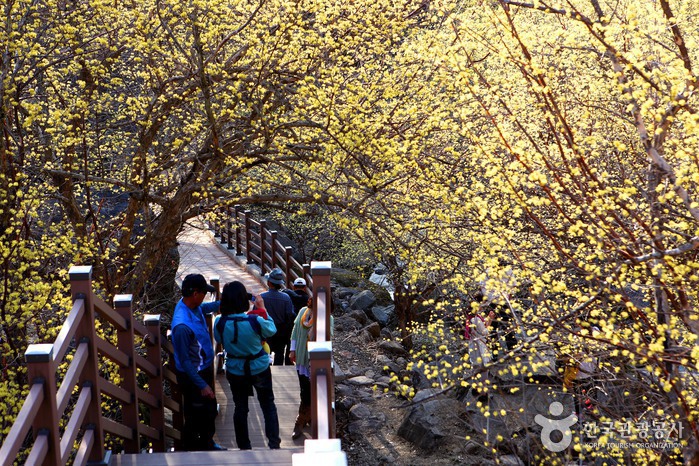
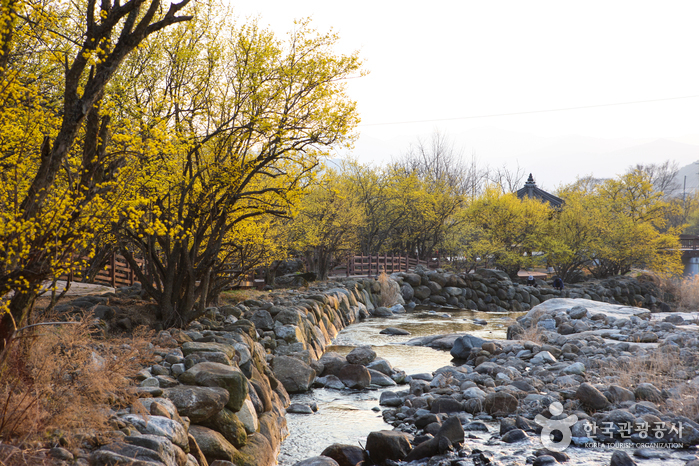
![Jirisanhosu resort [Korea Quality] / 지리산호수리조트 [한국관광 품질인증]](http://tong.visitkorea.or.kr/cms/resource/99/2594999_image2_1.jpg)

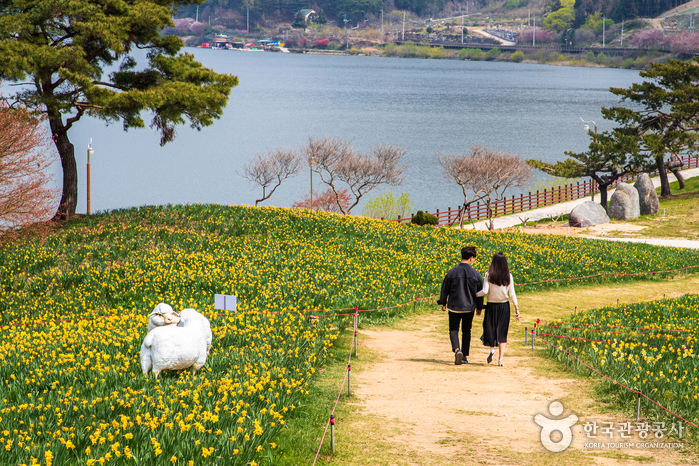
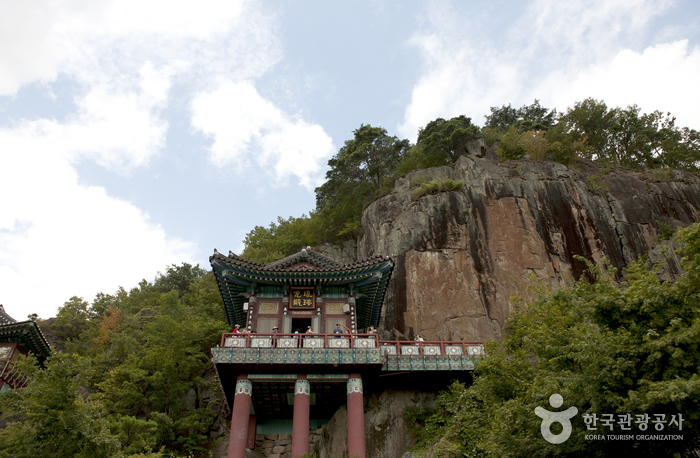
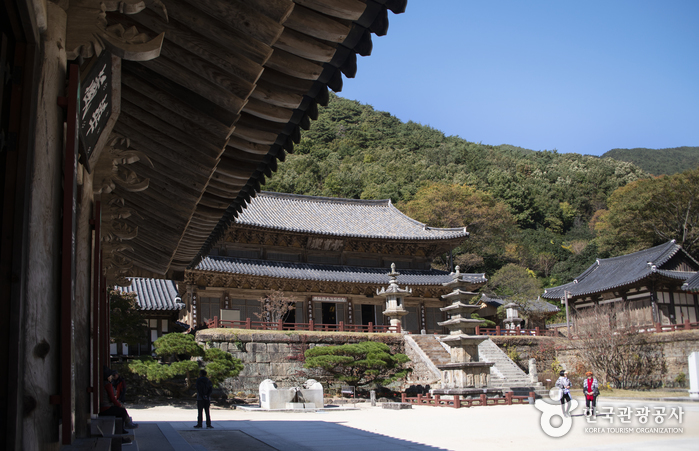
 English
English
 한국어
한국어 日本語
日本語 中文(简体)
中文(简体) Deutsch
Deutsch Français
Français Español
Español Русский
Русский